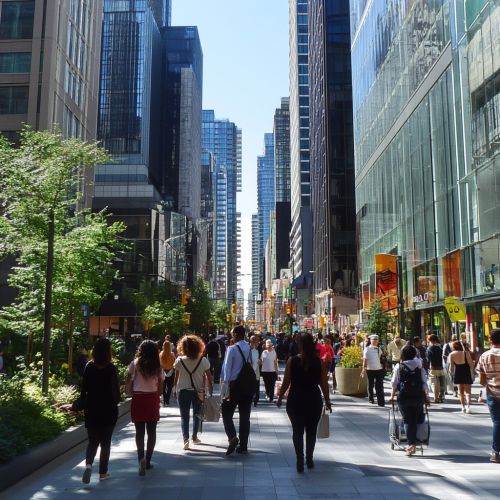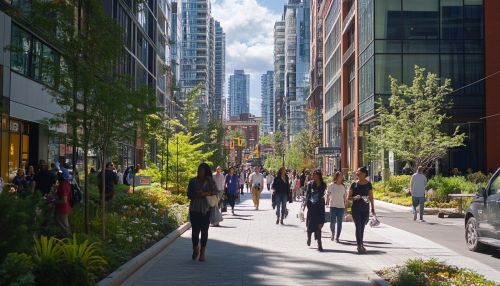Urban Communities
Introduction
Urban communities are complex social and spatial entities characterized by high population density, diverse demographics, and intricate economic, cultural, and infrastructural systems. These communities are typically found in cities and metropolitan areas, where they serve as hubs of human activity, innovation, and interaction. This article delves into the multifaceted nature of urban communities, exploring their historical development, social dynamics, economic structures, environmental challenges, and future prospects.
Historical Development
Urban communities have evolved significantly over time, shaped by various historical, economic, and technological forces. The earliest urban settlements emerged in ancient Mesopotamia, Egypt, and the Indus Valley, where the advent of agriculture and trade facilitated the growth of cities. These early urban centers were characterized by centralized governance, monumental architecture, and complex social hierarchies.
During the Industrial Revolution, urbanization accelerated dramatically, particularly in Europe and North America. The rise of industrial capitalism led to the proliferation of factories, railways, and other infrastructural developments, drawing large numbers of people from rural areas to cities in search of employment. This period also saw the emergence of new social classes, including a burgeoning urban proletariat and a wealthy industrial bourgeoisie.
In the 20th century, urban communities continued to expand and diversify, driven by factors such as globalization, technological advancements, and demographic shifts. The post-World War II era witnessed significant suburbanization, particularly in the United States, as well as the growth of megacities in developing countries.
Social Dynamics
Urban communities are characterized by a high degree of social heterogeneity, encompassing diverse populations with varying cultural, ethnic, and socioeconomic backgrounds. This diversity can foster vibrant cultural exchanges and innovation but also presents challenges related to social cohesion and inequality.
Demographics
Urban demographics are shaped by factors such as migration, birth rates, and economic opportunities. Cities often attract a mix of immigrants, young professionals, and students, contributing to a dynamic and ever-changing population. However, urban areas can also experience issues such as gentrification, which can displace long-term residents and exacerbate social inequalities.
Social Stratification
Urban communities often exhibit pronounced social stratification, with significant disparities in wealth, education, and access to resources. This stratification can manifest in spatial segregation, where affluent neighborhoods coexist with impoverished areas, leading to stark contrasts in living conditions and quality of life.
Social Networks
The dense and interconnected nature of urban environments facilitates the formation of diverse social networks. These networks can provide support, foster collaboration, and promote social mobility. However, they can also reinforce existing inequalities and exclusionary practices.
Economic Structures
The economic landscape of urban communities is multifaceted, encompassing a wide range of industries, labor markets, and economic activities. Cities are often economic powerhouses, driving national and global economies through innovation, trade, and investment.
Industry and Commerce
Urban areas are typically centers of industry and commerce, hosting a variety of businesses, from small enterprises to multinational corporations. The concentration of economic activities in cities can lead to economies of scale, increased productivity, and innovation. However, it can also result in economic disparities and environmental degradation.
Labor Markets
Urban labor markets are characterized by a diverse array of employment opportunities, ranging from high-skilled professional jobs to low-skilled service work. The availability of jobs in urban areas can attract a large workforce, but it can also lead to issues such as unemployment, underemployment, and labor exploitation.
Informal Economy
In many urban communities, particularly in developing countries, the informal economy plays a significant role. This sector includes activities such as street vending, informal transportation, and unregistered small businesses. While the informal economy can provide livelihoods for many urban residents, it often operates outside of regulatory frameworks, leading to issues such as job insecurity and lack of social protections.
Environmental Challenges
Urban communities face a range of environmental challenges, stemming from their high population density, intensive resource use, and complex infrastructural systems. These challenges include pollution, waste management, and climate change impacts.
Pollution
Urban areas are major sources of air, water, and soil pollution, resulting from industrial activities, vehicular emissions, and improper waste disposal. Pollution can have severe health impacts on urban residents, particularly vulnerable populations such as children and the elderly.
Waste Management
Effective waste management is a critical issue in urban communities, where large volumes of solid and hazardous waste are generated daily. Inadequate waste management systems can lead to environmental contamination, public health risks, and social inequalities.
Climate Change
Urban communities are both contributors to and victims of climate change. Cities are significant sources of greenhouse gas emissions due to energy consumption, transportation, and industrial activities. At the same time, urban areas are vulnerable to climate change impacts such as rising sea levels, extreme weather events, and heatwaves.


Future Prospects
The future of urban communities is shaped by a range of factors, including technological advancements, policy interventions, and societal trends. Addressing the challenges and opportunities of urbanization requires innovative approaches and collaborative efforts.
Sustainable Development
Sustainable development is a key consideration for the future of urban communities. This involves balancing economic growth, social equity, and environmental protection. Strategies such as green infrastructure, renewable energy, and sustainable transportation can help mitigate the environmental impacts of urbanization.
Smart Cities
The concept of smart cities involves leveraging technology and data to improve urban living conditions, enhance public services, and promote sustainability. Smart city initiatives can include smart grids, intelligent transportation systems, and digital governance platforms.
Social Inclusion
Promoting social inclusion is essential for fostering cohesive and resilient urban communities. This involves addressing issues such as affordable housing, access to education and healthcare, and social protection for vulnerable populations. Inclusive urban planning and participatory governance can help ensure that the benefits of urbanization are equitably distributed.
